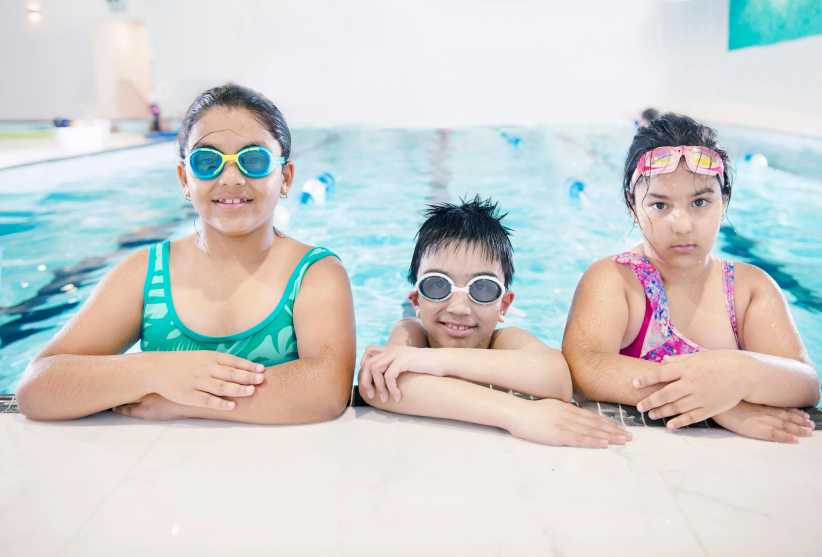Albert Wilking’s “toxic” past was riddled with a series of weird, and at times, “poisonous” experiences. Growing up, he was plagued by relentless illnesses and a puzzling assortment of maladies. But after years of questioning, rigorous self-discovery, and extensive research into harmful toxins, this amazing New Yorker finally found himself in a place of healing and wellness — and knew he had a calling: To educate the public about the dangers of mercury poisoning, with a goal of having all children mercury-free by the year 2020.
Imagine a perfect, toxin-free world in which kids everywhere can live, play, and learn — forever safe and protected from all of the bad stuff that can harm them, such as lead, free radicals, hormone-filled and pesticide-laced meats and produce, as well as genetically modified foods. They’d even be safe from potential mercury poisoning due to leakage from amalgam dental fillings.
What would this awesome, environmentally friendly utopia — where parents don’t ever have to worry about what their children consume or inhale — look like?
It’s fun to imagine, but let’s face it, the harsh reality is that no matter how hard we try to protect them, kids can’t live in a bubble. And if they could, they’d break free!
Still, that’s the kind of wonderful world wellness expert and mercury-free advocate Wilking, 53, dreams of and hopes for (in theory). Like the hundreds of parents he educates, he’s especially concerned about the potentially harmful effects of mercury in children, but says he can actually imagine a time, in the not too distant future, when moms and dads may worry less about toxins.
His motto, “mercury-free kids,” describes a life-long wellness mission that he has embraced since his younger days, after dealing with a wide range of diseases and medical illnesses that he believes were mostly due to mercury poisoning.
The parent of 15-year-old son Felix says when he’s not teaching mercury poisoning and recovery, he’s studying it, and believes, “It’s a tragedy that modern-day healthcare continues to administer to unwitting consumers — mercury in dental fillings, and vaccines, and that much of the ‘science’ they give us is misinformation.”
His website www.mercuryfreekids.org is chock full of helpful information and suggestions based on Wilking’s own personal journey and fascinating findings. (Mercury Free Kids and Mercury 101 do not offer medical advice. Parents and caretakers should consult their child’s pediatrician and dentist if they suspect mercury poisoning, which may turn out to be something else entirely.)
Wilking’s past was often riddled with a series of strange, toxin-related experiences that compelled him to investigate the connection between those and his ongoing health problems. For a while, that past would define him. But in time, he found himself in a much better place, and he knew he wanted to help others.
On his site he writes, “I have a history of living and working in toxic environments. When growing up, my family home had a photography studio, and a painting studio with toxic artist paints. The family regularly adventured into abandoned factories, industrial sites, and ghost towns. It was exciting but toxic.
“During my middle school years, playgrounds included the town dump and climbing over mounds of brightly covered chemicals at the Middlesex Chemical factory. I played with mercury from broken thermometers, and remember losing the mercury beads into the floor boards of our house. Wounds were occasionally treated with Mercurochrome, and vaccines were administered.”
Young Albert had chronic ear infections, severe allergies, and almost constant colds. As a teen, his emotional problems became more apparent.
“As an adult, I regularly worked with toxic paints,” he writes. “I soldered copper pipes with lead, refinished furniture with toxic chemicals, and renovated two dentist offices. I had a very expensive sushi habit, was a tuna sandwich junkie, regularly drank Gatorade (bromine), and used cold medicines (bromine).”
“My life-long, severe allergies and emotional instability continued. I cried almost every day of my life until my mid-20s. I could fly into a rage for the smallest of reasons.”
Wilking has started an important conversation about this crucial but mostly forgotten issue, mercury poisoning, and in this in-depth interview, provides NY Parenting readers with his valuable input. He says he has consulted with other mercury experts, including dentists, chemists, scientists, and policy experts, like Michael T. Bender, director of the Mercury Policy Project http://mercurypolicy.org.
Tammy Scileppi: Is a mercury-free USA a realistic goal? And what about other countries?
Albert Wilking: My mission has all children mercury-free. I have my work cut out for me to get enough adults educated to protect all of our beautiful babies going forward.
Some countries like Norway and Sweden are mercury-free in dentistry. Unfortunately, countries like the Philippines have a huge problem with mercury from mining.
The U.S. is now allowing coal fly ash to be used in household products like sheetrock and carpet backing. Another hidden place for mercury is in high fructose corn syrup. About 20 percent of fructose is mercury tainted. Mercury poisoning isn’t going away any time soon. The best thing we can do is to educate ourselves.
I’ve made a comprehensive list of mercury sources on my website (www.mercuryfreekids.org/hg-poisoning-sources).
TS: Dentists still use fillings with mercury, so how do parents get around that?
AW: Unfortunately, the American Dental Association still requires those on social services, including little children, to have mercury fillings placed, or they will have to pay for services out of pocket. There are dentists that have been in the business for a long time, who claim a small amount of mercury is harmless. You may notice I call amalgam dental fillings mercury fillings, and that’s because they are 50 percent mercury. There is only nine to 12 percent silver in the filling, so they should never have been called silver fillings. They should be called what they are, mercury fillings.
TS: So, why is mercury potentially harmful to kids and adults?
AW: Mercury interferes with our proper usage of the essential elements. These elements can protect us from mercury, but only to a certain extent. Our systems and bodies can become deranged in the presence of mercury. To get our systems in top shape, we need to get the toxins out of our bodies by making sure we are flush with needed elements. It’s a balancing act.
TS: Regarding those elements, how does your site’s two-hour interactive workshop with Q & A sessions work? How can parents access it?
AW: My current workshop is called “The Building Blocks of Life” and is at www.mercuryfreekids.org/life-building-blocks.
I use lots of easy-to-understand stories and metaphors to explain the essential elements and vitamins we need for survival. Let’s compare a brick building to that of a human body. You may have heard we need lots of calcium. However, most of us have all the calcium we need. If we view calcium as the bricks in our building, what we need more of is the mortar between those bricks to make our walls solid. Magnesium is that mortar. It’s needed in more than 300 of our vital cellular processes. It gives our bones and teeth strength.
Iodine makes the longest bonds known to man. Seventy percent of a thyroid hormone is made up of iodine. Iodine is the architectural plan for our bodies. It tells us where to put our walls, how tall we will grow, what goes in the rooms, and when the garbage is taken out. Without enough iodine, the body loses direction and order. We can see that when the thyroid starts backing up, growing into a goiter. Without iodine, the thyroid starts swelling up with half-baked hormones; it’s as if the service staff in our building has gone on strike.
TS: Talk about your “mercurial” past and your leaky dental filling.
AW: My entire life, I had some kind of constant chronic infection: Lyme disease, conjunctivitis, allergies, constant colds. I was on antibiotics for two years for Lyme disease; I couldn’t get rid of it. Because of that leaking filling, I learned about bacteria and methylate mercury. When the body or the antibiotic kills off the bacteria, the mercury is released, and then the body has to deal with the mercury. So there is this chronic level of inflammation, and the body doesn’t get better. The bacteria will not die off until the mercury is removed. https://en.wikipedia.org/wiki/Mercury(II)_reductase.
Today, I’m one of the healthiest people I know. My knees and joints had ached since I was a child. No more. You can see a list of my problems, at www.mercuryfreekids.org/about.
TS: How did your “toxic” past define you for a while?
AW: At one time in my life, I had a problem with self-medicating, whether it was drinking too much alcohol, taking a bunch of vitamin supplements, or spending too much money on sushi. Think of these common sayings, “I really tied one on last night” or “he/she really knows how to hold their liquor.” I thought I was fearlessly, heroically approaching life. Now I see it for what it is: ego, and putting myself in a constant state of stress through toxic ingestion. I think it’s addictive. Mercury poisoning is actually called mercury intoxication.
TS: What about emotional issues stemming from mercury poisoning?
AW: The phrase “emotional lability” was first coined in reference to mad hatters. They were quite common in Danbury, Conn. and Newark, N.J. In the hatting business, mercury nitrate would steam the felts for hats, rise up to the ceiling, condense, and drip back down onto the heads of the workers, staining their hair and skin orange. Johnny Depp played it quite well in “Alice and Wonderland.” Many hatters were off their rockers and their emotions would flip on and off. About 60 percent of the deaths in the industry were men under the age of 30! www.mercuryfreekids.org/mercury101/danbury-shakes.
We all know people who can fly into a rage or start crying over the smallest things. I was one of them. (Emotional lability is also listed as a symptom of acrodynia: https://en.wikipedia.org/wiki/Acrodynia)
TS: What should parents do to avoid mercury exposure?
AW: The best way is to be educated on the subject. I have a great page with almost all the sources of mercury possible: www.mercuryfreekids.org/hg-poisoning-sources.
Mercury is 500 times more dangerous than lead. It has an affinity for sulfur, and we are loaded with sulfur. If a thermometer breaks inside a school, the entire school can be closed while men in clean suits do remediation. The amount of mercury in a thermometer is about equal to the amount of mercury in a large dental filling!
Old-school dentists that drill mercury out of people’s mouths, with very little in the way of safety precautions, are in denial of putting the health of themselves and their patients at risk.
Today, conscientious, educated dentists are using clean-room technology to protect themselves, their staff, and their patients from mercury.
If you go to www.dentalwellness4u.com/layperson/symptoms.html, you can read about holistic, mercury-free dentistry of Dr. Tom McGuire. He has been a mercury-safe, holistic dentist for more than 35 years, and is an innovator and leader in holistic dental wellness, having spent the last 20 years researching mercury amalgam fillings and studying their effects on overall health.
In addition, the doctor’s extensive research into mercury detoxification has resulted in the development of his mercury detoxification program. (Click on, “Mercury Detoxification: The Natural Way to Remove Mercury from Your Body,” to review the book and read chapter excerpts.)
And you can also check out this video: https://www.youtube.com/watch?v=AO_6W-Hnt64.
Once a parent or anyone else sees the safeguards these dentists use in this video, good luck going back to an old-fashioned dentist.
• • •
For additional reading, check out this 2014 article on forbe
Bromine: Toxic and pervasive
Children’s health advocate Albert Wilking claims that some of his health problems stemmed from exposure to mercury and bromine which could be found in his Gatorade and cold medicines. According to the Centers for Disease Control and Prevention, “Bromine works by directly irritating the skin, mucous membranes, and tissues.
“The seriousness of poisoning caused by bromine depends on the amount, route, and length of time of exposure, as well as the age and preexisting medical condition of the person exposed,” states the Centers for Disease Control and Prevention website.
The Centers describe Bromine as “a naturally occurring element that is a liquid at room temperature. It has a brownish-red color with a bleach-like odor, and it dissolves in water.”
Bromine can be found in a number of places in your everyday world, including:
• Pesticides (specifically methyl bromide, used mainly on strawberries, predominantly in California).
• Bakery goods and some flours often contain a “dough conditioner” called potassium bromate.
• Soft drinks (including Mountain Dew, Gatorade, Sun Drop, Squirt, Fresca, and other citrus-flavored sodas), in the form of brominated vegetable oils.
• Medications such as Atrovent Inhaler, Atrovent Nasal Spray, Pro-Banthine (for ulcers), and anesthesia agents.
• Fire retardants used in fabrics, carpets, upholstery, and mattresses.



















